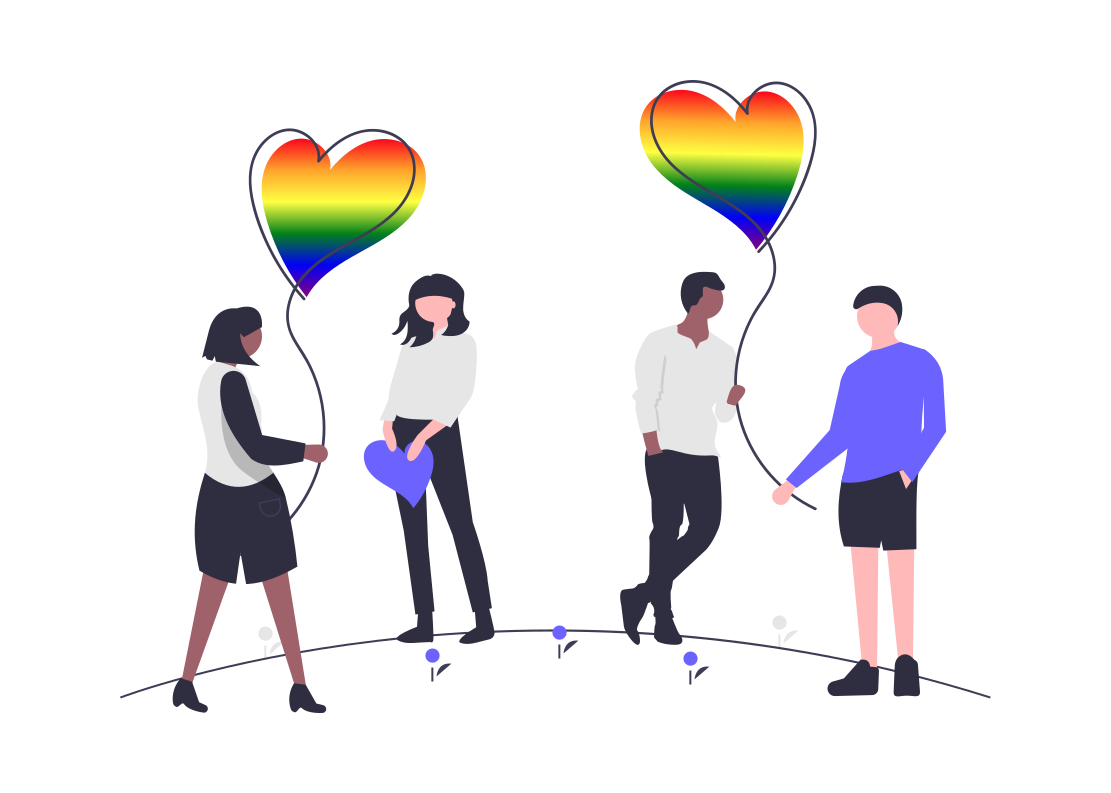Being a member of the LGBTQ+ community can sadly provide a feeling of alienation, especially at medical school. While attitudes are changing, there is still stark evidence of prejudice within medicine (in addition to that seen in general life) due to differing senses of identity from the deemed ‘normality’. Supporting LGBTQ+ people and doctors in medicine is imperative to improve medical education and ultimately patient care.
I’m going to talk about my experiences as a member of the LGBTQ+ community and how the prejudice that exists can be overcome.
A bit about my experience
Applying to medicine felt like a never-ending nebulous with many hurdles along the way, which was made especially difficult when coming from a queer background. I experienced many obstacles when applying and although I made it into medicine, there are difficulties many LGBTQ+ people face. Notably when receiving relevant opportunities to succeed due to possible bias and discrimination. There can be elements of homophobia throughout the application process, particularly at the interview. Many LGBTQ+ people (including myself) can feel very anxious during interviews due to this worry of systemic bias and sadly this is the case on a wider societal level.
From what I’ve found, content covered at medical school often tends towards being cissexual and heteronormative. For example, many universities will generally use example patients that are heterosexual and cis-gendered and (more than often) white. Ergo, there is an apparent lack of inclusivity of LGBTQ+ people within topics and cases being studied. Where cases are highlighted to be more relevant to LGBTQ+ people, they are often frustratingly within the context of topics like HIV/AIDS. This simply reinforces stigmatisation and only addresses a tiny fraction of the health and social issues LGBTQ+ people face.
At a wider university level, while LGBTQ+ societies and social events do exist there is a feeling that this is simply not enough. More should be done throughout the university to prevent any sense of labelling or difference.
Discrimination against LGBTQ+ people in the workplace
From the perspective of being an actual doctor, there are still significant barriers during day-to-day interactions with patients and other staff with a heightened sense of discrimination. Over 70% of clinicians have reported experiences of harassment or abuse due to their sexual orientation, following a survey run by the British Medical Association in 2019. Far too many medical staff report feelings of discomfort and “environmental” homophobia with fear of harassment and psychological abuse. Ultimately, this impacts not only the people themselves but their ability to provide essential care for patients.
This institutional discrimination also has been shown to impact on the career paths queer people choose to take within medicine. Some careers (particularly within research) have a reputation of not supporting those from LGBTQ+ backgrounds. Again, lack of representation inversely affects patient care on a daily basis.
LGBTQ+ people are a minority within healthcare and more should be done to encourage people from this background to apply. However, this can only be achieved once effective mechanisms are in place within the application process for Medicine, at medical school and in the working medical environment to support and empower LGBTQ+ people as well as protect them from discrimination and, unfortunately, hatred.

How do we overcome systemic anti-LGBTQ+ bias?
Within healthcare
To overcome barriers, we should be further incentivising medical careers for LGBTQ+ people by firstly improving the working conditions of doctors as a whole and by having support networks specially designed to support LGBTQ+ people. A list of support networks can be found here
More promotion and recognition of these support networks should be highlighted within the medicine using the discussion of partnerships, talks, leaflets, posters, infographics etc.
Within medical education
Medical schools should move to drastically increase inclusivity within their curricula to ensure more representation of queer people, rather than simplistically focusing on yet another cis-gendered, white, male patient. Within higher education in general, more support and funding should be given to societies aimed at empowering LGBTQ+ people. This could facilitate events dedicated to allowing similar people to interact and share experiences.
Within the medical application:
In terms of the application itself, there are a plethora of different ways in which LGBTQ+ people can be supported with the application process. There are a few essential changes that should be made:
-
- – Firstly, some form of declaration of pronouns should be an essential aspect of the interviews. When relevant, the interviewer should ask the pronouns of all interviewees. Being misgendered at interview can lead to significant distress and anxiety. This is now commonplace within clinical practice and should be within the application.
- – Secondly, more should be done to protect the identity of LGBTQ+ people during interviews to avoid any indication of bias, preventing the interviewer from knowing the orientation of the candidate.
However, it is important that medical schools themselves actively attempt to reach out, interview and ultimately accept more LGBTQ+ individuals. It is imperative universities highlight the positive LGBTQ+ culture that most definitely should be present at the university. This should be highlighted to all students regardless of their orientation signifying the inclusive nature of the school.
More opportunities for teaching students within university and school and also the wider public on issues within the LGBTQ+ community. Promotion of compassion and acceptance ensures people understand the experiences of LGBTQ+ people and the importance of supporting them.
In summary:
- Attitudes towards LGBTQ+ people are changing but there is still a long way to go.
- Patient education and promotion of LGBTQ+ healthcare workers is needed in wider society.
- Institutional change is needed and this starts with medical schools acknowledging queer people on their curricula.
- Barriers still exist but it is possible for LGBTQ+ people applying to medicine but they can be overcome with the right support!